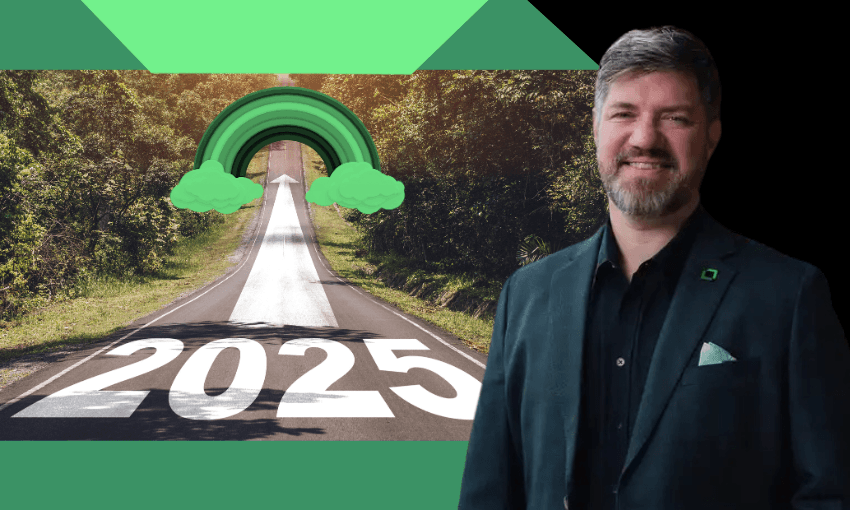The light at the end of the recession tunnel is growing brighter thanks to recent interest rate cuts. And the good news? There are more cuts to come.
After wading through what has felt like an endless river of economic mud, the recent cuts to the official cash rate (along with talk of more cuts to come) has put a tentative spring into the economy’s step. But what do these cuts actually mean for the average New Zealander, businesses on the brink and the economy at large? Kiwibank’s chief economist, Jarrod Kerr, joins Bernard Hickey on this week’s episode of When the Facts Change to discuss what’s happening and, more importantly, what he thinks is coming next.
Kerr, who has long been calling for interest rate cuts, sees the Reserve Bank’s recent move as a step in the right direction, though he’s quick to reflect on how tough things have been. “We’ve been through two years of recession, and we’ve just noticed that this year in particular, things are starting to snowball. The labour market is loosening, and businesses are seemingly doing it a lot harder.”
But now, with the OCR dropping, Kerr says there’s finally a glimmer of hope and he predicts the Reserve Bank will make another 50 basis point cut in next month’s monetary policy announcement .
On where he sees the OCR sitting in the coming months, Kerr says “5.5% was a very, very restrictive rate… I’d like to see it closer to 4% by the end of the year, and I’d love to see it below 4% early next year.”
Kerr has already observed signs that struggling businesses are breathing a little easier. He says earlier in the year, when meeting with businesses, the response to talk of cuts on the distant horizon would be met with “thanks for the optimistic view, but here are all the problems I’m facing”.
All that’s changed now the Reserve Bank has actually started cutting the OCR. “It’s no longer theoretical. You can see it. It’s tangible. It’s happening. Businesses are turning around to me and saying, How far are they going? What does this mean for asset markets, spending in the economy? They’ve lifted their heads almost immediately and and they are looking to next year with much greater optimism”
The rate cuts may lead to the loosening of purse strings ahead of Christmas, which would be a welcome relief to retailers. Kerr says it can take up to 18 months before the effects of cuts are felt across the economy as a whole. However he believes the transmission time between the cutting of rates and effects on the economy will be faster than usual as many mortgage holders have lending fixed for less than 12 months.
According to Kerr, most of Kiwibank’s customers have chosen to fix for six months, which he considers to be a really short rate for New Zealanders, “so they’re going to roll off the next few months, and they’ll be feeling the relief of lower interest rates much faster than they would have in the last cutting cycle.”
So are we safe to look forward to 2025 with some hope? Kerr is cautiously optimistic: “generally speaking, we’re saying the rising tide is going to lift all boats, but there are some that have clearly been doing it a lot tougher than others.” He hopes to see a bounce back in the retailing and hospitality spaces over Christmas and into next year as consumer spending ”returns to something more normal.”
And after being in a recession that’s lasted the best part of two years, “something more normal” sounds pretty damn good.
Click here for more episodes of Bernard Hickey’s economics podcast When the Facts Change.
